Let’s Talk About Glutes (Part 1)
By Coach Gianni
No this is not going where you think it is, but(t) it will shed some light on a neglected area that we use every day in our daily lives and during our workouts. A lot of people are under the impression that if you do some mobility once a week, you’ll be free of the injury bug. Unfortunately, this is not true and we have to make this more of a habit and less of a chore. Let’s be real about this, when was the last time you targeted your posterior? You know, that thing you’re sitting on reading this right now. Today we’re going to talk about how you can give yourself an advantage in life and sport.
Gluteus Maximus
Function: Largest of the three. Helps with moving the leg back into extension and rotates the leg externally (ex: duck walk).
Gluteus Medius
Function: Sits underneath the Glute Max and stabilizes the hips and thigh abduction (away from the body). Crucial muscles that help with single leg movements like lunges, squats and even walking up stairs. Without it the pelvis would drop off to one side.
Gluteus Minimus
Function: Smallest of the three. Sits under the Glute Med and aids in Glute Med function which is hip stabilization.
Why glute stretching?
Can relieve discomfort/pain and tension in:
1. Lower Back
2. Glutes
3. Pelvis
4. Hamstrings
5. Hips
6. Knees
What are the benefits of glute stretching?
1. Gain flexibility
2. Improve range of motion
3. Reduce risk of injury
4. Improve mobility
You (K)need Strong Glutes
Did you know that having strong glutes directly translates to having stronger knees? Not only is it beneficial for your quads but it also gives support to your ACL and VMO (vastus medialis oblique) which is a quadriceps muscle that sits on the inside of your thigh and helps control the position of the patella. Without strong glutes, movements such as squats, lunges and even walking up and down stairs can be dangerous due to the position of your knees.
The ACL is a ligament that runs through the middle of you knee and its job is to provide rotation, stability, and limit the amount of movement between the tibia (shin bone) and the femur (thigh bone). The wider a person’s hips are, the greater the angle between the femur and the tibia. This means that if a person’s glutes are not firing or in a position to handle stress, then the ACL is susceptible to injury.
In short, your glutes are not only good for filling out those Levis, they are a crucial muscle group that either makes your life and workouts enjoyable or puts you in a position of injury. If you value not only your back but your knees and hips then do your derriere a favor and mobilize it!
Below is a list of stretches that can start you off on your journey to healthier glutes. Each stretch can be performed pre or post workout and should be held for a duration of 30-60 seconds. It only takes 5-10 minutes to do but over the days, months and years you will start to see the benefit of your diligence in your everyday life.
Sources:
https://www.healthline.com/health/exercise-fitness/how-to-stretch-glutes#Chair-glute-stretches
https://www.sportsinjuryclinic.net/rehabilitation-exercises/knee-hamstring-thigh-exercises/vmo-rehab
https://www.shape.com/fitness/tips/scary-reasons-women-are-more-likely-tear-their-acls
https://www.shape.com/fitness/tips/benefits-strong-butt

